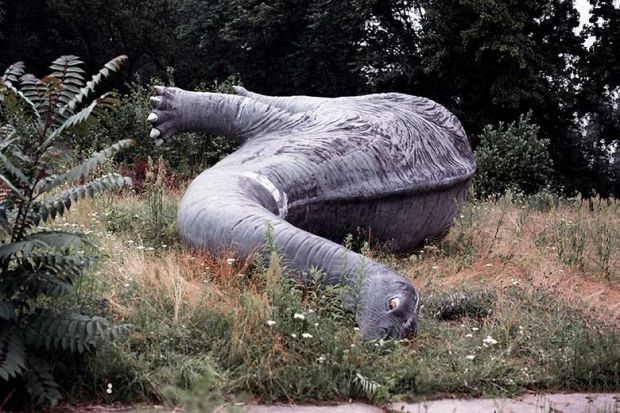Describing the origin of everything – the universe, the stars, planets, the Earth and life – is an enormous challenge. Doing it in just over 100 pages is asking for trouble. Can it be done? Unfortunately, it seems that the answer is no.
David Bercovici’s The Origins of Everything in 100 Pages (More or Less) is based on an undergraduate lecture course, and promises a sweeping view from the Big Bang to the present day while zipping along at a breathless pace. As a result, in some places it reads like an extended synopsis, or a series of condensed revision notes you’ve made for yourself in the run-up to an exam (you may be tested on this later). Subjects are touched on, but rarely in enough detail to be satisfying. For example, early in the formation of the universe, energy is described as expanding to lower density whereupon it condenses out matter, but condensation at lower densities seems odd. And the birth of the Dark Age of the universe is ascribed to light “escaping”, but given the finite nature of the universe, where does it escape to? Both are counterintuitive ideas that need quite a bit of unpacking. A good lecturer can bring such subjects to life in class, but on the page there’s not enough to convince, and I can imagine a student repeating it all back by rote, but without deep understanding.
Bercovici is a geophysicist, and in the chapters dealing with subjects closest to his disciplinary home I found more substance, focusing on the important parts and skipping appropriately over things that don’t aid understanding. Those sections (continents, oceans, climate) make up about half of the book. The origins of life are given about 15 pages, mainly describing what life is but also covering the major current theories of where it came from. Humans and civilisation are given 10 pages at the end – which seems fair enough, and possibly even excessive given the blip we represent in the vast span of time that the book aims to cover at a gallop. In contrast, the formation of stars and the elements, including hydrogen fusion, the triple-alpha process, the CNO reaction and neutron capture are zipped through in seven pages of information-rich text that I imagine might have novice readers gently tearing out their hair.
The tone of the book is quite chatty, and Bercovici is rather fond of parenthetical observations (as am I). Climate change is addressed pragmatically and without hyperbole, making the point that large swings in climate have happened before and the Earth will ultimately (probably) recover. It is living organisms that are forced to undergo dramatic adjustments on short timescales, with extinction often the outcome, whereas over geological spans the Earth will likely go back to business as usual. You may or may not find this comforting.
I wouldn’t recommend Bercovici’s short, sharp book as a light read, but it does make for an excellent synopsis for a lecture course of this type. Pointers are provided to both general and specific reading sources for more information so as to flesh out the detail. With all the blanks filled in, I’d imagine this would be a course that students would find inspirational.
Cait MacPhee is professor of biological physics, University of Edinburgh.
The Origins of Everything in 100 Pages (More or Less)
By David Bercovici
Yale University Press, 152pp, £12.99
ISBN 9780300215137
Published 11 November 2016
Register to continue
Why register?
- Registration is free and only takes a moment
- Once registered, you can read 3 articles a month
- Sign up for our newsletter
Subscribe
Or subscribe for unlimited access to:
- Unlimited access to news, views, insights & reviews
- Digital editions
- Digital access to THE’s university and college rankings analysis
Already registered or a current subscriber?




